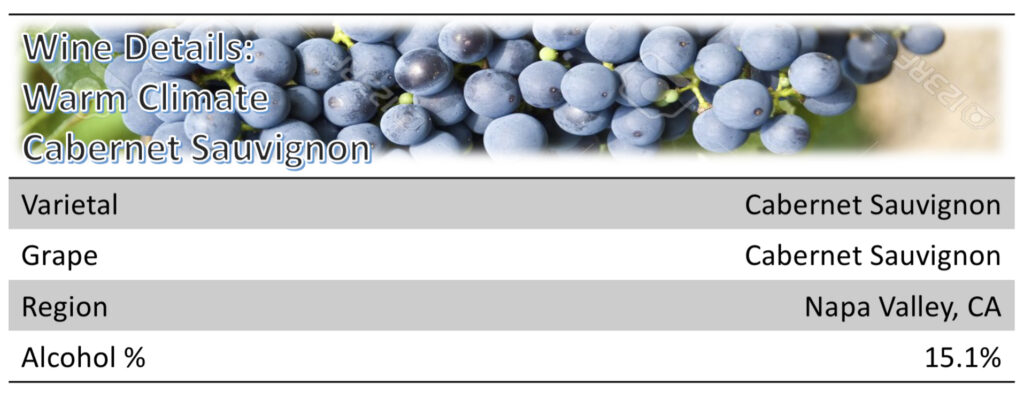Cabernet Sauvignon Climate Influences
Moderate Climate: With cooler weather, Cabernet Sauvignon grapes ripen slower allowing fruit flavors to build while maintaining fresh acidity. Sugar levels develop slower and keep alcohol levels well in balance versus warm climate wines. Tannins from the grape’s thick skin remain high but the riper fruit flavors prevent tannins from overwhelming the wine or tasting bitter. Cooler temperatures can make ripening Cabernet Sauvignon grapes a challenge resulting in vegetal notes like mint or green pepper. Just the right amount of these flavors can give the wine its distinct style and complexity, but as with most things, too much can result in harsh, bitter aftertaste especially when tannins remained high.

Warm Climate: Sunny days and warm nights during the growing season sounds like the perfect environment to grow Cabernet Sauvignon. When the perfect match of sun, rain and heat come together, big bold gorgeous Cabs are possible. Juicy black fruit pairs perfectly with moderate acidity and tannins which are strong, but mellow in this style of wine. Compared to grapes from more moderate climates, warm climate styles rift away from herbal flavors and take on uniquely complex hints of black licorice or anise. Too much of a good thing can cause challenges for wine growers if the grapes ripen too fast or intensely warm temperatures drive acidity levels too low making the wine dull and the fruits overcooked like stewed prunes.

